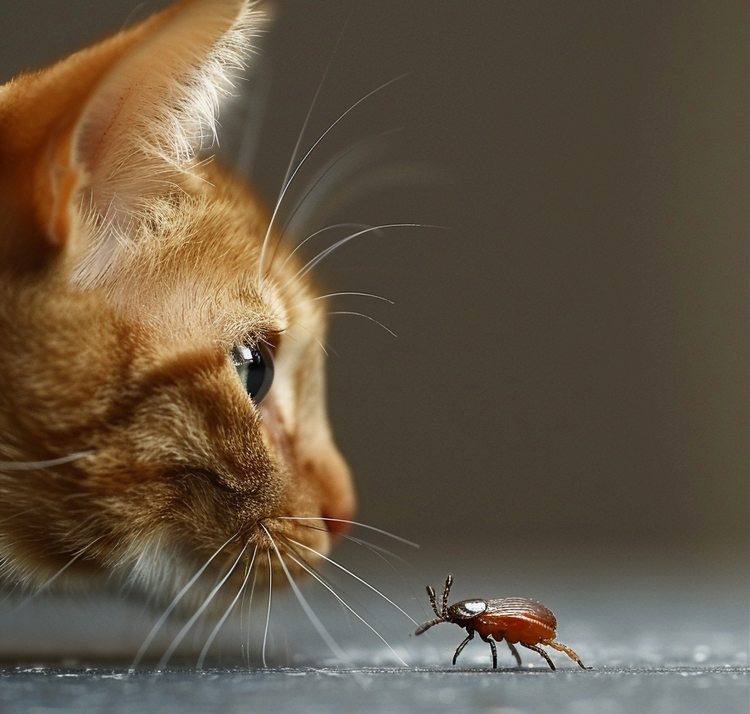Understanding Feline Dermatitis: Causes and Solutions
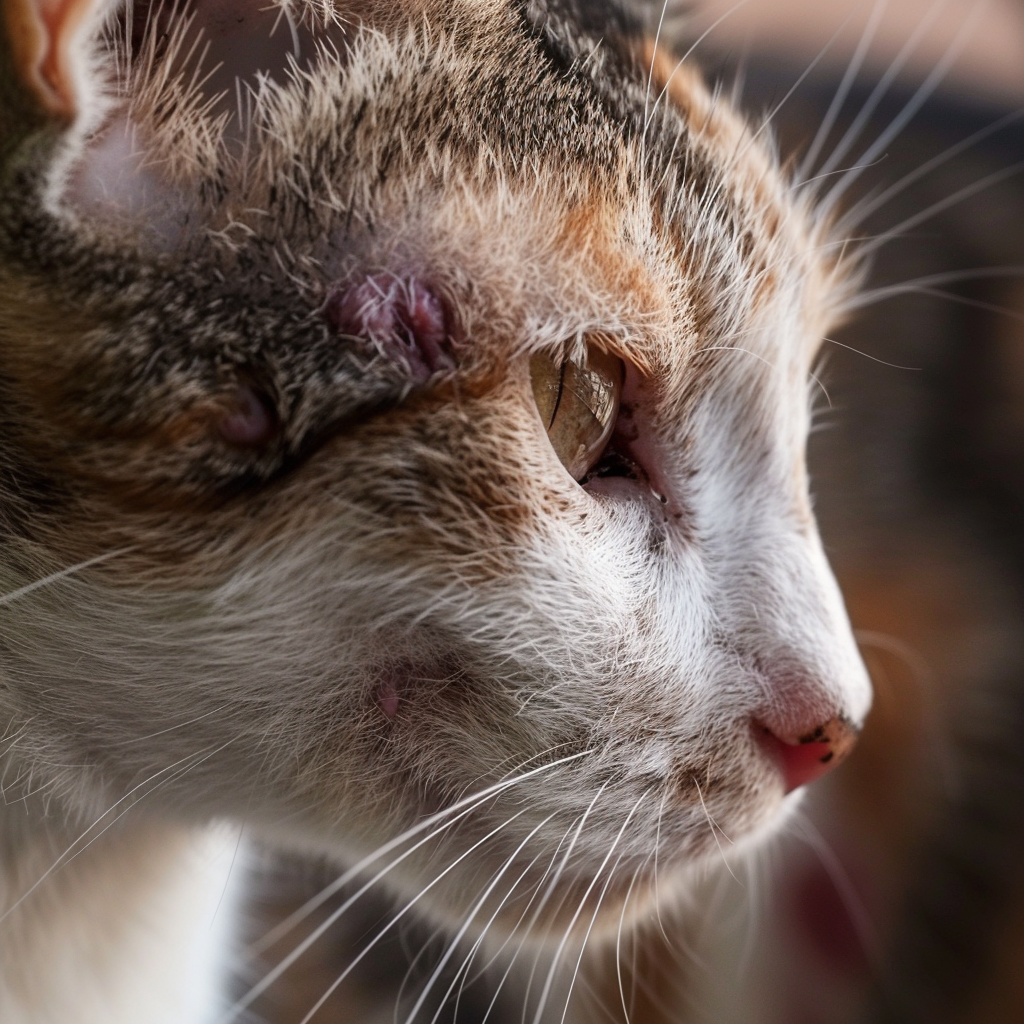
Feline dermatitis, often manifested as itchy skin, redness, and hair loss, is more than just an uncomfortable annoyance for our feline friends. This prevalent skin condition can signify underlying health issues that, if left unchecked, may lead to more severe complications. As cat owners, it's crucial to delve into the intricacies of this condition, understanding its causes, symptoms, and potential treatments. Why? Because the well-being of our beloved pets hinges not just on the love we shower them with but also on our ability to recognize and address their health concerns promptly. By gaining insights into feline dermatitis, you're taking a pivotal step towards ensuring your cat leads a happy, healthy, and itch-free life. Join us as we explore the essentials of feline dermatitis, underlining the significance of this knowledge in fostering a nurturing environment for your pet.
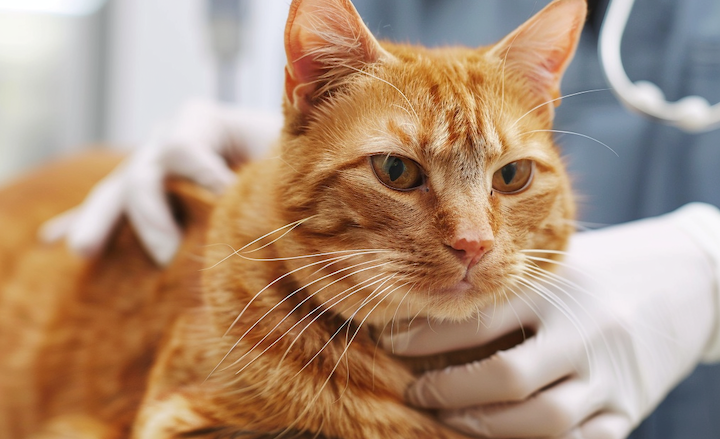
Deciphering Feline Dermatitis: From Causes to Symptoms
Feline dermatitis, an inflammatory condition affecting cats' skin, poses a significant concern due to its discomforting effects. It's a complex disorder, presenting in various forms, each stemming from distinct causes and necessitating tailored treatment approaches. Grasping the intricacies of this condition is essential for the proactive care of our feline companions.
Key aspects of feline dermatitis include:
- Flea Allergy Dermatitis: This condition occurs when a cat has an allergic reaction to flea saliva, making even a single flea bite extremely irritating. It leads to intense itching, skin redness, and can result in hair loss and secondary skin infections due to scratching. Preventative flea treatments are crucial for managing this condition. Consistent use of vet-recommended flea control products is essential to prevent outbreaks and protect your cat's health.
- Food Allergy Dermatitis: Cats can develop allergies to specific proteins in their diet, which can manifest as skin irritation, gastrointestinal issues, or both. Identifying the offending ingredient often requires a dietary elimination trial, where potential allergens are systematically removed from the diet to observe for improvement. A hypoallergenic diet may be recommended by a veterinarian. Close monitoring and patience during the elimination trial are key to pinpointing the dietary cause of dermatitis.
- Atopic Dermatitis: Similar to humans with seasonal allergies, cats can react to airborne allergens like pollen, mold, or dust mites. This condition can cause chronic itching, leading to skin thickening and secondary infections over time. Treatment often includes managing the environment, possibly medication to control symptoms, and allergen-specific immunotherapy. Environmental modifications, such as using air purifiers and frequent cleaning, can significantly reduce exposure to allergens and improve your cat's quality of life.The origins of feline dermatitis vary, ranging from parasites such as fleas to environmental allergens like pollen and dust. Food ingredients can also incite allergic responses, emphasizing the need for careful monitoring of a cat's diet and living environment.
Symptoms to watch for include:
- Persistent itching and redness
- Noticeable hair loss
- Excessive grooming and altered skin texture
Identifying these signs early is crucial for timely intervention, preventing the escalation of the condition. By fully understanding feline dermatitis—from its causative factors to symptomatic expressions—cat owners are better equipped to ensure their pets' welfare, contributing to a fulfilling and discomfort-free existence for their beloved cats.
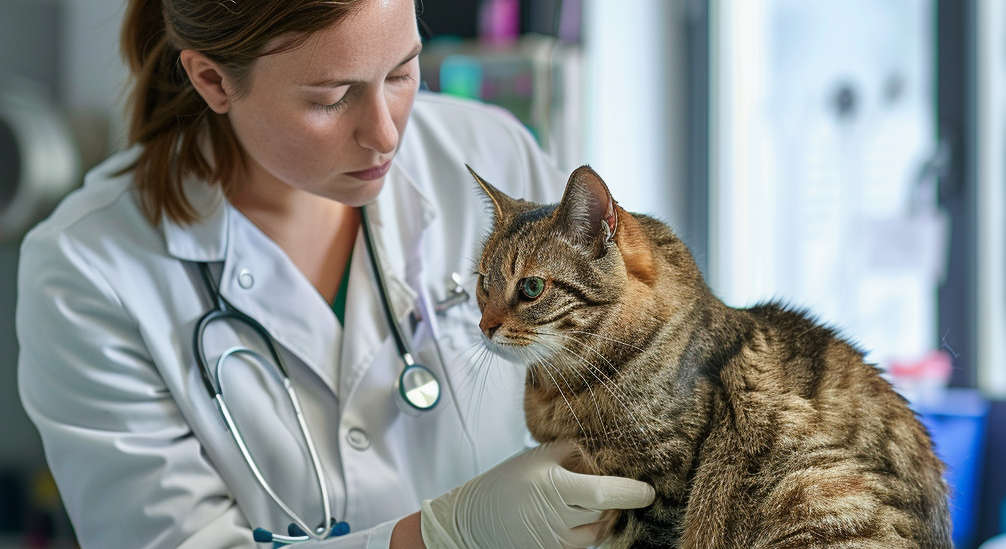
Navigating the Diagnosis of Feline Dermatitis: A Step-by-Step Guide
The path to diagnosing feline dermatitis is intricate, requiring careful evaluation and tests to identify the underlying causes accurately. A thorough physical examination by a veterinarian marks the beginning of this journey, where the search for signs like irritation, redness, and hair loss offers initial insights into the condition's severity and nature.
Key diagnostic steps include:
- Physical Examination: A veterinarian's first step in evaluating the cat's skin condition.
- Skin Tests: Essential for identifying parasites, fungi, or bacteria as potential culprits.
- Allergy Testing: Utilizes blood samples or intradermal tests to detect allergens causing dermatitis.
Further exploration is often necessary beyond the initial check-up to pinpoint the exact cause of dermatological issues. Skin tests, including scrapings and biopsies, are critical in this detective work, revealing the presence of parasites, fungi, or bacteria. Allergy testing further aids in identifying specific allergens, providing a clear direction for treatment.

Tailoring Treatment for Feline Dermatitis: A Dual Approach
Effective feline dermatitis treatment embraces a two-pronged strategy: immediate symptom relief and tackling root causes for ongoing management. Initially, medications like corticosteroids and antihistamines play a vital role in reducing inflammation and itchiness, offering cats swift comfort.
Key treatment aspects include:
- Immediate Symptom Relief: Utilizing corticosteroids and antihistamines to reduce discomfort.
- Addressing Root Causes: Implementing flea control and dietary adjustments to prevent recurrence.
Delving deeper, addressing the underlying issues is essential for lasting relief. Flea control and dietary changes, particularly for food-related allergies, are critical in preventing further episodes. Central to successful management is creating a personalized treatment plan. Veterinarians tailor these plans to each cat's unique health profile and lifestyle, aiming not just to alleviate current symptoms but also to prevent future outbreaks, highlighting the tailored approach's significance in effective dermatitis management.
The Crucial Role of Early Detection in Managing Feline Dermatitis
Understanding the importance of early detection in managing feline dermatitis is key to ensuring the well-being of our feline companions. By being vigilant and responsive, cat owners can significantly enhance their pets' quality of life. Here's a concise guide to the proactive steps necessary for early detection and management:
- Prompt Identification: Watch for early signs like continuous scratching, redness, and hair loss.
- Seek Veterinary Assistance: Consult a vet immediately to address symptoms before they worsen.
- Prevent Complications: Early treatment helps avoid secondary infections caused by bacteria or fungi due to skin damage.
- Maintain Health and Happiness: Quick action ensures your cat stays comfortable, healthy, and happy.
Early detection of feline dermatitis is crucial in preventing the condition from developing into more severe problems. By recognizing the signs early and acting swiftly, cat owners can protect their pets from unnecessary discomfort and health issues, ensuring a better quality of life for their beloved feline friends.
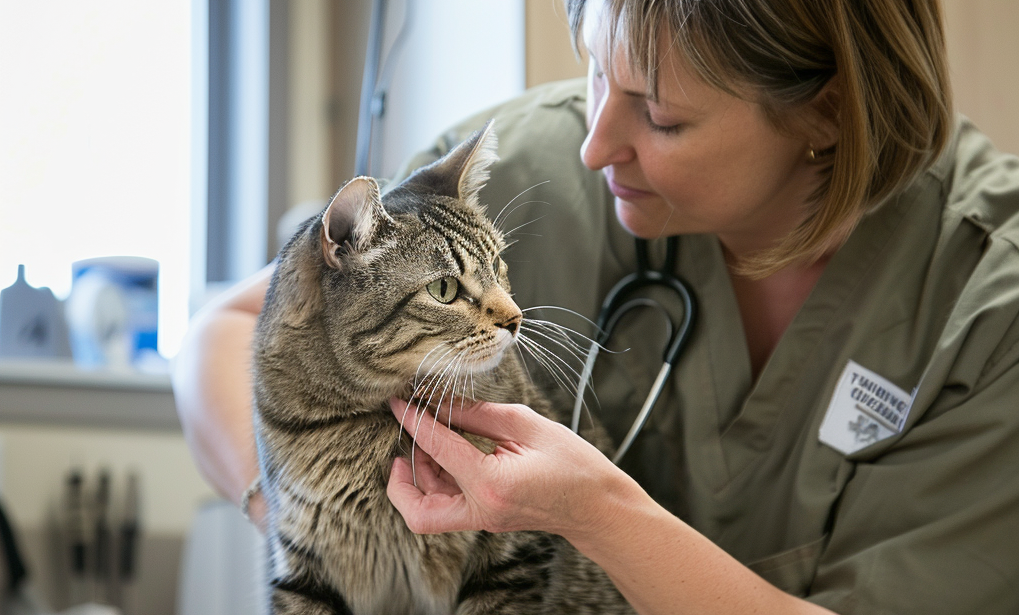
Proactive Prevention: Guarding Against Feline Dermatitis at Home
Proactive measures are essential to fend off feline dermatitis and ensure our cats lead comfortable lives. Here’s a quick guide to preventing this common skin condition through careful, attentive care:
- Regular Grooming: Essential for bonding and monitoring your cat's skin health, helping to identify early irritation or pest infestations.
- Flea Prevention: Monthly treatments are critical to minimize the risk of flea-related dermatitis.
- Home Care Practices: Keep your living space clean and allergen-free with regular vacuuming, dusting, and the use of air purifiers to lower indoor allergen exposure.
- Balanced Diet: Offer a diet that meets your cat's specific needs to prevent food allergy triggers.
Implementing these preventive strategies is key to safeguarding your cat's health and preventing feline dermatitis. By taking these steps, cat owners can make a significant difference in their pets' lives, ensuring they remain happy and healthy without the discomfort of dermatitis.
Effective Product Solutions for Feline Dermatitis
Managing feline dermatitis involves not only understanding its causes and symptoms but also knowing which products can offer relief and support for your cat's skin health. Here, we'll highlight some effective solutions that can help soothe and treat dermatitis in cats.
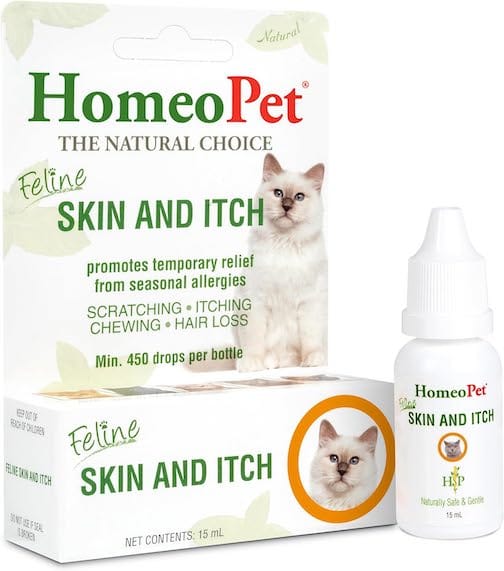
HomeoPet Feline Skin and Itch, Cat Skin-Soothing Medicine, Safe and Natural Skin and Itch Support for Cats, 15 Milliliters
- Natural Ingredients: Safe for cats of all ages.
- Ease of Use: Liquid form, easily administered directly into your cat's mouth or mixed with food.
- Targeted Relief: Alleviates itching and soothes irritated skin.

Vet Organics Hot Spot Spray for Cats
- Natural Formula: Contains natural ingredients for soothing relief.
- Multi-Species Use: Suitable for both cats and dogs.
- Effective Relief: Helps with itch relief, rashes, and raw skin.

Pet MD Hydrocortisone Spray for Cats
- Hydrocortisone: Provides quick relief from itching and irritation.
- Versatile Use: Suitable for dogs, cats, and horses.
- Hot Spot Treatment: Effective for hot spots, dry skin, and allergies.
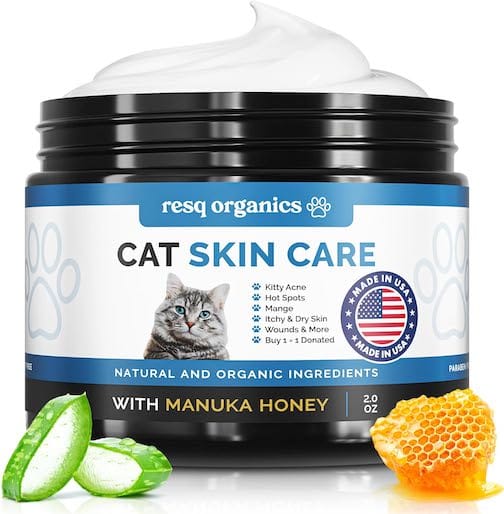
Cat Paw Balm Cat Cream 2 oz: Hot Spot Treatment for Cats Dermatitis, Mange Treatment
- Natural Ingredients: Formulated with soothing and healing natural ingredients.
- Versatile Treatment: Effective for hot spots, dermatitis, mange, and dry skin.
- Wound Care: Promotes healing of minor wounds and skin irritations.
Choosing the right products can significantly improve the management of feline dermatitis, offering your cat relief from discomfort and supporting long-term skin health. Always consult with your veterinarian before starting any new treatment regimen to ensure it's the best fit for your cat's specific needs. By integrating these products into your care routine, you can help your cat lead a happier, healthier, and itch-free life.
Empowering Health: A Final Word on Feline Dermatitis
Understanding feline dermatitis is more than a matter of pet care; it's a vital step towards ensuring the health and happiness of our feline friends. This journey through the causes, symptoms, diagnosis, and treatment of dermatitis highlights the importance of being vigilant and informed as cat owners. Remember, early detection and proactive prevention are key to managing this condition effectively.
We encourage all cat owners to maintain open lines of communication with their veterinarians. Seeking professional advice for proper diagnosis and treatment is crucial. By working closely with a vet, you can tailor a care plan that addresses your cat's specific needs, paving the way for a healthier, more comfortable life together. Let's commit to understanding and tackling feline dermatitis head-on, for the well-being of our beloved pets.
Frequently Asked Questions:
Can feline dermatitis be cured?
While some forms of dermatitis can be cured, especially if caused by infections or specific allergens that can be completely avoided, many cases require ongoing management to control symptoms.
What are the treatment options for feline dermatitis?
Treatment varies depending on the underlying cause and may include flea control measures, dietary changes, antihistamines, corticosteroids, immunotherapy, or medicated shampoos.
Is feline dermatitis contagious to other pets or humans?
Most forms of feline dermatitis are not contagious to other pets or humans. However, if the dermatitis is caused by certain parasites or fungal infections, such as ringworm, it can be transmissible. Always consult a veterinarian for accurate diagnosis and advice.
What should I do if I suspect my cat has dermatitis?
If you suspect your cat has dermatitis, schedule a visit with your veterinarian. Early diagnosis and treatment can prevent the condition from worsening and help maintain your cat's comfort and health.
Can stress cause dermatitis in cats?
Yes, stress can exacerbate skin conditions, including dermatitis, in cats. Stress can weaken the immune system and make cats more susceptible to skin issues. Managing your cat's stress through environmental enrichment and minimizing changes in their routine can help.
How long does it take for dermatitis to heal in cats?
The healing time for dermatitis in cats can vary widely depending on the cause, the treatment's effectiveness, and how quickly the treatment was started. Some conditions may show improvement within a few days, while others, particularly chronic issues, may require ongoing management.
Do indoor cats get dermatitis?
Yes, indoor cats can also suffer from dermatitis. Indoor allergens like dust mites, mold, and certain types of litter or household cleaners can contribute to atopic dermatitis. Fleas can also be a problem indoors, especially in multi-pet households or if the cat has access to outdoor spaces.
Can feline dermatitis spread over my cat’s body?
Yes, if left untreated, dermatitis can spread and worsen. For example, a localized flea allergy can lead to widespread irritation and secondary infections due to scratching. Prompt treatment is essential to prevent the condition from escalating.


